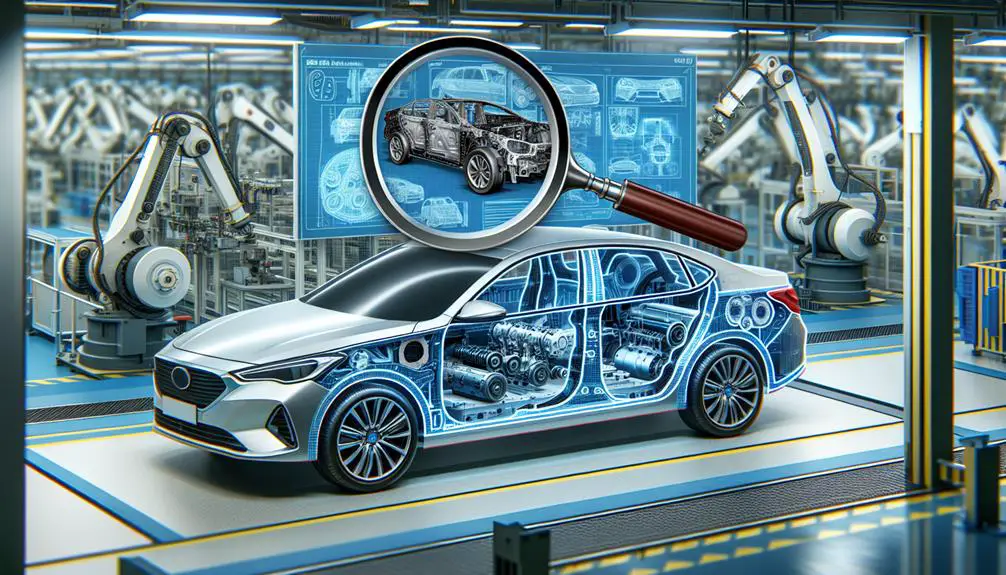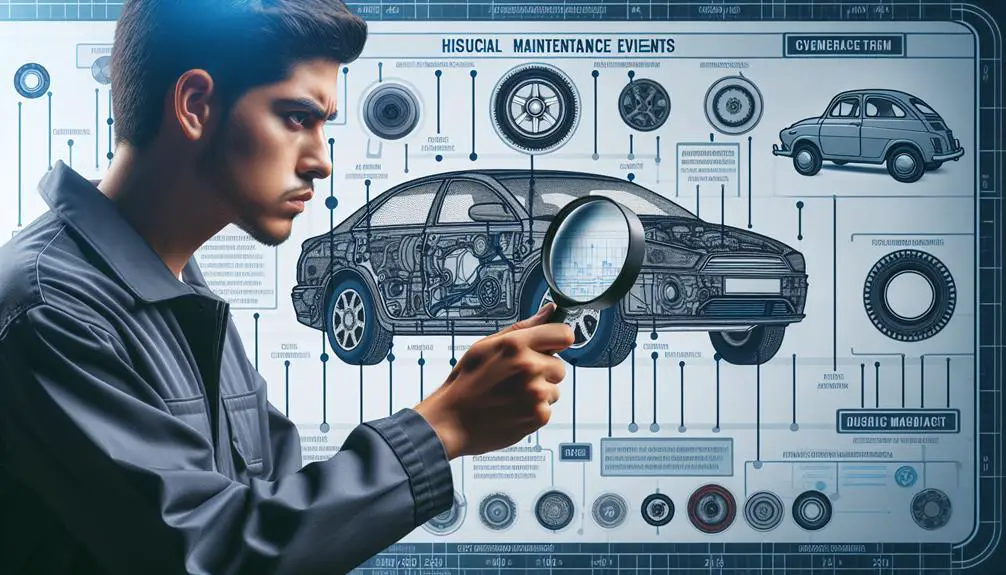The chassis number, also known as the vehicle identification number (VIN), contains information about the car's manufacturer, model, year of production, and more. It serves as a unique identifier for your Hyundai and can be used to track its service history, warranty details, and recalls. By decoding the chassis number, you can uncover valuable insights about your vehicle's origins and specifications. Understanding this information can help you make informed decisions about maintenance, repairs, and upgrades for your Hyundai.
Understanding the Chassis Number

Deciphering your Hyundai's chassis number reveals significant information about your vehicle, ensuring you're fully informed about its identity and specifications. This unique identifier, often referred to as a Vehicle Identification Number (VIN), is more than just a random string of characters. It's basically your car's fingerprint, distinct and informative.
You'll find this number in several locations on your vehicle, typically on the dashboard near the windshield on the driver's side, or on a sticker inside the driver's door jamb. It's on your vehicle's registration documents, making it easily accessible when you need it.
Comprehending the significance of this number is vital, especially when you're buying a used car. It helps you verify the car's authenticity, ensuring you're not investing in a stolen or illegally modified vehicle. Furthermore, it's indispensable when ordering parts, guaranteeing you get the correct components that fit your car perfectly.
Decoding the Characters
Now let's break down what each character in your Hyundai's chassis number means, ensuring you comprehend every aspect of your vehicle's identity.
The initial three characters, known as the World Manufacturer Identifier (WMI), reveal where your car was made and who made it. For Hyundai, this often begins with 'KMH', indicating a vehicle manufactured in Korea by Hyundai.
The subsequent six characters are the Vehicle Descriptor Section (VDS), which provides specific information about the vehicle's model, body style, and engine type. This section is crucial for grasping the features and specifications of your car.
Following the VDS, there's a single character that serves as a check digit. This isn't about your car's features but is a complex mathematical calculation used to validate the authenticity of the entire chassis number.
The subsequent character marks the model year. It's encoded in a single letter or number, giving you a quick insight into the year your vehicle was manufactured.
Lastly, the final section, consisting of six characters, is the Vehicle Identifier Section (VIS). Here, you find a unique serial number for your Hyundai, distinguishing it from any other vehicle.
Comprehending these elements empowers you to decode your car's identity fully, beyond just a series of numbers and letters.
Manufacturing Insights

Comprehending the manufacturing details of your Hyundai can provide deeper insights into its quality and craftsmanship. The chassis number, often overlooked, is a gateway to grasping the meticulous processes behind the creation of your vehicle. It's not just a series of random characters but a narrative of your car's birth.
Delving into the manufacturing aspects, you'll uncover:
- Production Location: Knowing where your Hyundai was made can hint at specific quality standards and engineering practices unique to that facility.
- Assembly Line Precision: Hyundai's commitment to precision is evident in their assembly lines, where robots and skilled technicians work in harmony.
- Material Quality: The chassis number can lead you to specifics regarding the materials used in your car's construction, highlighting Hyundai's dedication to durability and safety.
- Innovation in Manufacturing: Hyundai's investment in state-of-the-art technologies ensures that your vehicle benefits from the latest advancements in automotive manufacturing.
- Environmental Considerations: Hyundai's manufacturing processes are designed with the environment in mind, aiming to reduce carbon footprint and promote sustainability.
Understanding these aspects through the lens of the chassis number enriches your appreciation for the vehicle you drive, beyond its aesthetics and performance.
Verification Methods
Exploring the manufacturing insights of your Hyundai through its chassis number naturally leads to the question of how you can verify this information for yourself. Thankfully, you've got a few simple methods at your disposal.
To begin with, you can check directly with Hyundai. Head to their official website and look for the VIN (Vehicle Identification Number) decoder or contact customer service. They'll need your car's chassis number and, within a few steps, you'll have your vehicle's manufacturing details verified.
Another approach is using online VIN checkers. These tools are pretty easy to use; you just input your Hyundai's chassis number, and the service scans different databases to give you a detailed report. This not only verifies your car's manufacturing details but can also highlight any potential issues or recalls associated with your vehicle's specific model.
Lastly, consider visiting your local Hyundai dealer. They've direct access to the manufacturer's database and can verify your car's details. Plus, it's a great opportunity to ask any questions you might've about your vehicle directly to the experts.
Maintenance and History Tracking

Grasping your Hyundai's maintenance and history through its chassis number can greatly improve your vehicle's longevity and performance. This unique identifier isn't just a series of random characters; it's a gateway to a wealth of information about your car. By leveraging this data, you're making sure that you're up-to-date with maintenance schedules, aware of any previous issues, and can even anticipate future needs. Here's why tracking your Hyundai's history and maintenance using its chassis number is a smart move:
- Access to Detailed Service Records: Know every service your vehicle has undergone, from routine oil changes to major repairs.
- Recall Notifications: Stay informed about any recalls that affect your specific model.
- Warranty Information: Understand what aspects of your car are still under warranty and for how long.
- Verification of Authenticity: Make certain that parts and repairs are genuine and up to Hyundai's standards.
- Resale Value: Improve your vehicle's resale value with a transparent history and well-documented maintenance record.
Conclusion
So, you've now got the lowdown on Hyundai's chassis numbers. By decoding each character, you understand your car's DNA – from where it was made to its unique identity.
You've learned how to verify its authenticity and the importance of tracking its history and maintenance.
Remember, this isn't just about keeping your car in check; it's about ensuring its story is accurate and its path, smooth. Keep this guide handy, and you're all set to navigate your Hyundai's life with ease.